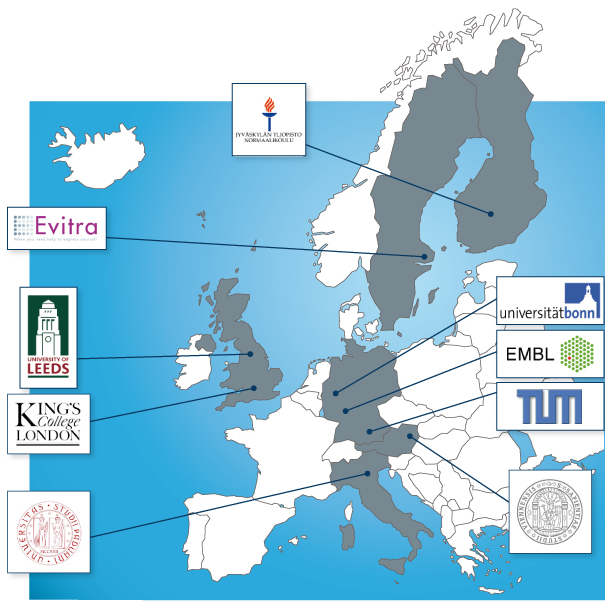Group:MUZIC
From Proteopedia
(Difference between revisions)

(New page: 200px MUZIC provides a unique mix of cellular and structural biology laboratories with a focus on ...) |
|||
| Line 1: | Line 1: | ||
| - | [[Image:MUZIC-Consortium.png|right|frame|MUZIC Consortium, participating organizations| | + | [[Image:MUZIC-Consortium.png|right|frame|MUZIC Consortium, participating organizations|100px]] |
MUZIC provides a unique mix of cellular and structural biology laboratories with a focus on muscle research and combines a series of complementary state-of-the art know-how and technologies ranging from high resolution (X-ray crystallography) and low resolution structural biology methods (SAXS, EM, cryo-EM tomography, atomic force microscopy) to a variety of cell biology oriented techniques, ranging from FRET and live-cell imaging, cellular and animal models to animal physiology. These are complemented by a biochemical and biophysical characterisation of proteins and their complexes. | MUZIC provides a unique mix of cellular and structural biology laboratories with a focus on muscle research and combines a series of complementary state-of-the art know-how and technologies ranging from high resolution (X-ray crystallography) and low resolution structural biology methods (SAXS, EM, cryo-EM tomography, atomic force microscopy) to a variety of cell biology oriented techniques, ranging from FRET and live-cell imaging, cellular and animal models to animal physiology. These are complemented by a biochemical and biophysical characterisation of proteins and their complexes. | ||
Revision as of 07:35, 24 June 2011
MUZIC provides a unique mix of cellular and structural biology laboratories with a focus on muscle research and combines a series of complementary state-of-the art know-how and technologies ranging from high resolution (X-ray crystallography) and low resolution structural biology methods (SAXS, EM, cryo-EM tomography, atomic force microscopy) to a variety of cell biology oriented techniques, ranging from FRET and live-cell imaging, cellular and animal models to animal physiology. These are complemented by a biochemical and biophysical characterisation of proteins and their complexes.

